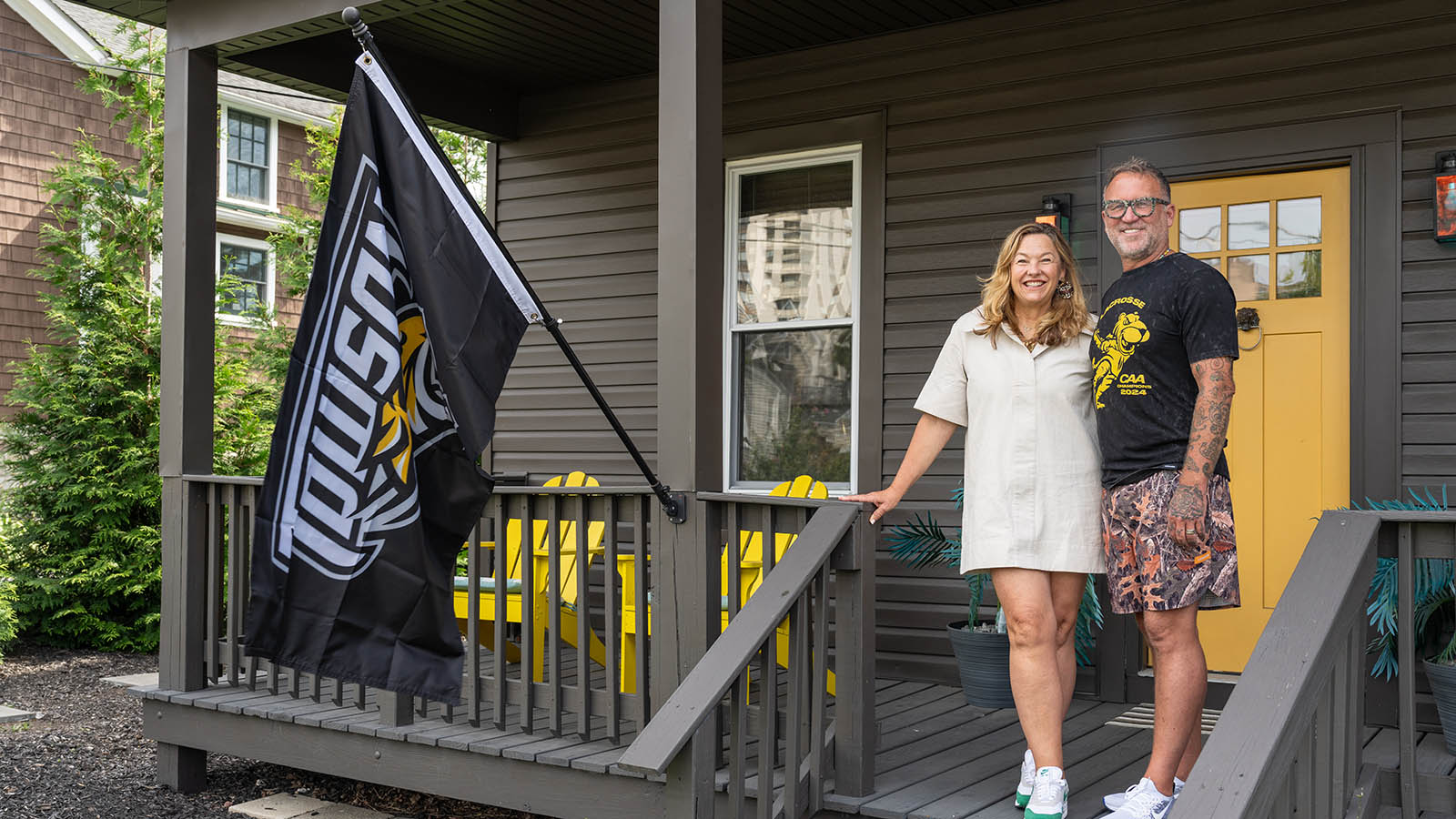Feature Series
Building the Future of Health Care
The new Health Professions Building’s cutting-edge technology and collaborative learning spaces make it a leading center for interprofessional health and wellness education.
The new Health Professions Building may have officially opened on Sept. 12, but students and faculty began using the state-of-the-art facility at the beginning of the fall semester.
“This building marks a pivotal moment for both our college and the university,” says College of Health Professions Dean Lisa Plowfield. “With its advanced technology and immersive learning spaces, it allows us to ensure our students can meet the evolving demands of Maryland’s health care workforce.”
The new facility brings nearly all of TU’s health professions programs together under one roof, including the state’s first accredited occupational therapy program and Maryland’s second-largest baccalaureate nursing program. This addition strengthens CHP’s dedication to excellence in health and wellness education, opening about a year after the relocation of the college’s Institute for Well-Being.
Towson gave me the foundation of my entire career. I developed my philosophy of care when I was training there, and I love that. When I learned about the building and this technology, I wanted to give back to a place that I know is going to continue to produce wonderful nurses who will take care of people.
Karen Keady ’87, decided to honor her parents, John and Elaine, by naming the virtual body lab.
The numbers are impressive.
TU has the largest health professions enrollment and the second-highest graduate rate in the University System of Maryland (USM). Around 30% of the USM’s nursing bachelor’s degrees come from TU.
The university broke ground at the building site, along University Avenue between the Liberal Arts Building and Prettyman and Scarborough halls, on Oct. 7, 2021. USM Chancellor and physician Dr. Jay S. Perman gave remarks during the ceremony that marked the occasion.
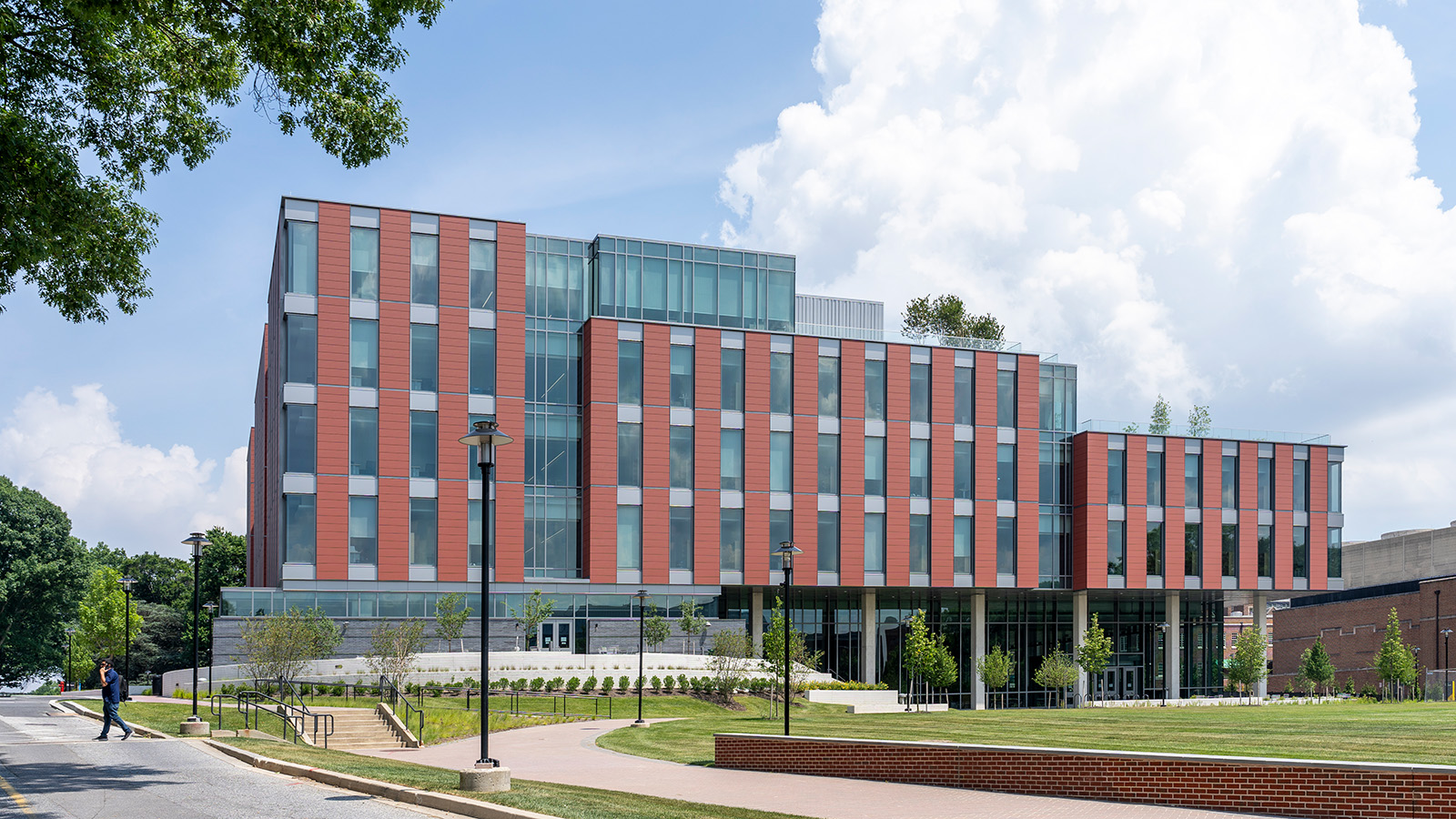
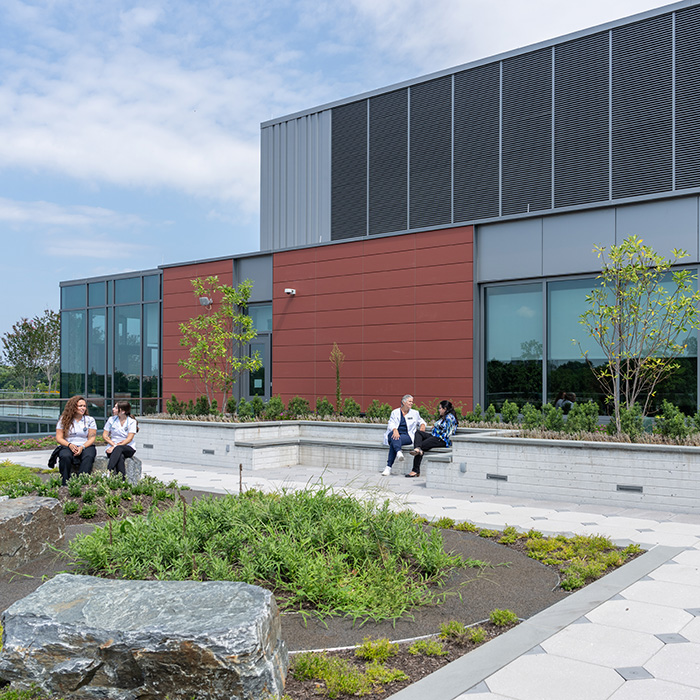
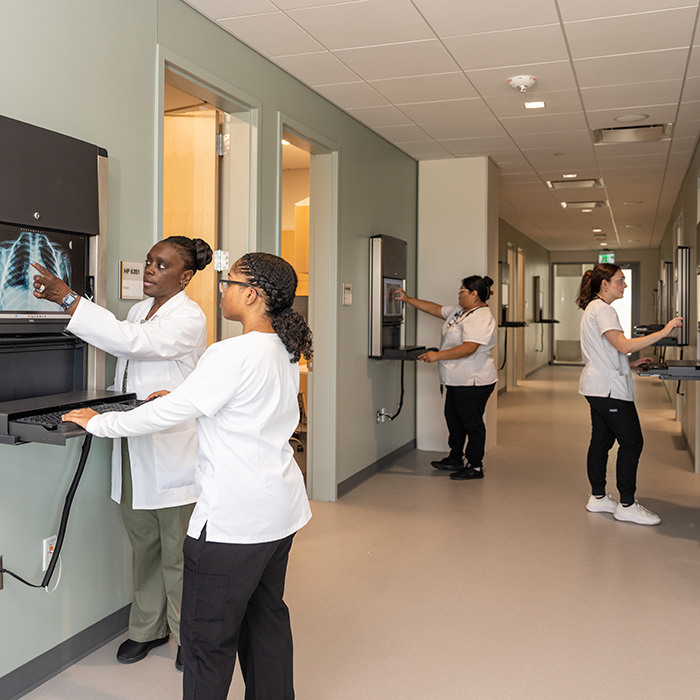
(1) The outside of the new building. (2) The building has three terraced roof gardens with connections to several disciplines’ programming as well as space to sit quietly and reflect. (3) The simulation center provides students with an immersive, real-world learning experience in a safe environment.
“The students who are going to come out of this building, they are truly the future of health care,” he said. “We didn’t need a pandemic to tell us how critical that future is. This building will give us the capacity to close our workforce gaps while giving students the opportunities they’re clamoring for. They are banging down the doors to get into Towson’s health programs. I hear it, and now you can swing those doors wide open.”
With the graying of America—the needs are only getting greater. The pandemic pointed out our vulnerability as a nation and woke us up to the importance of health professionals as frontline and essential workers. Our CHP students have been scattered over a 2-mile radius for decades. This important new building offers unique spaces for collaboration and learning in multiple ways.
Fran Soistman ’79, ’15 (hon.), a portion of his 2020 gift of $5.6 million went to the new building
Those newly open doors reveal an estimated 240,000 square feet purposefully designed to provide high-quality education, immersive, real-world experiences and moments of self-care for health professions students, faculty and staff.
The six-story, $192 million building features 19 collaborative classrooms; 10 specialty
high-tech interprofessional labs; eight audiology diagnostic labs; a state-of-the-art
simulation center for acute, multi-patient, and primary care scenarios; and a 350-seat
auditorium for the college’s interprofessional programming.
Around 30% of the USM’s nursing bachelor’s degrees come from TU.
“I’m grateful we have a building constructed for and dedicated to the health professions that allows for more cross-discipline collaboration and a deeper sense of community within our college," Plowfield says.
Great care was taken while planning the design and construction of the building. It features abundant natural light through the many windows and the atria, multiple green spaces including three terraced roof gardens and thoughtful choices on the colors, furnishings and mechanical systems (HVAC, boilers, etc.). These are a few of the subtle touches that make the academic building a place students, faculty and staff feel comfortable.
The new building further demonstrates TU’s commitment to sustainability, with a design that is on track to be certified LEED Gold—surpassing University System of Maryland targets for LEED Silver status. Since 2007, TU has been committed to building all new construction projects to the U.S. Green Building Council’s LEED standards—a benchmark for the sustainability of campus buildings.
Towson University’s greatness is not only its reputation for scholarship and academic rigor but also in its commitment to serve our neighboring city Baltimore. I want to remind students of the importance and required commitment of every Towson health professional to serve the underserved with respect, dignity and quality care.
Terris King ’84, ’18, donor
The campus currently boasts 14 LEED certified buildings: TU Arena, the West Village Commons building, Marshall and Barnes halls, Burdick, Residence Tower, Barton and Douglass houses, Public Safety, College of Liberal Arts, Science Complex, University Union, Glen Dining and the Health and Counseling centers.
“Our new building is a catalyst for students to begin their careers. I believe this is the best facility of its kind in the country,” TU President Mark Ginsberg says. “I know it will be transformative for our programs, transformative for our students. It’ll be a precious resource for the Towson community and for the community of health professionals in Baltimore, Maryland and our region. It is a gem and will allow our programs to continue their tradition, their legacy of excellence.”
All Part of the Master Plan
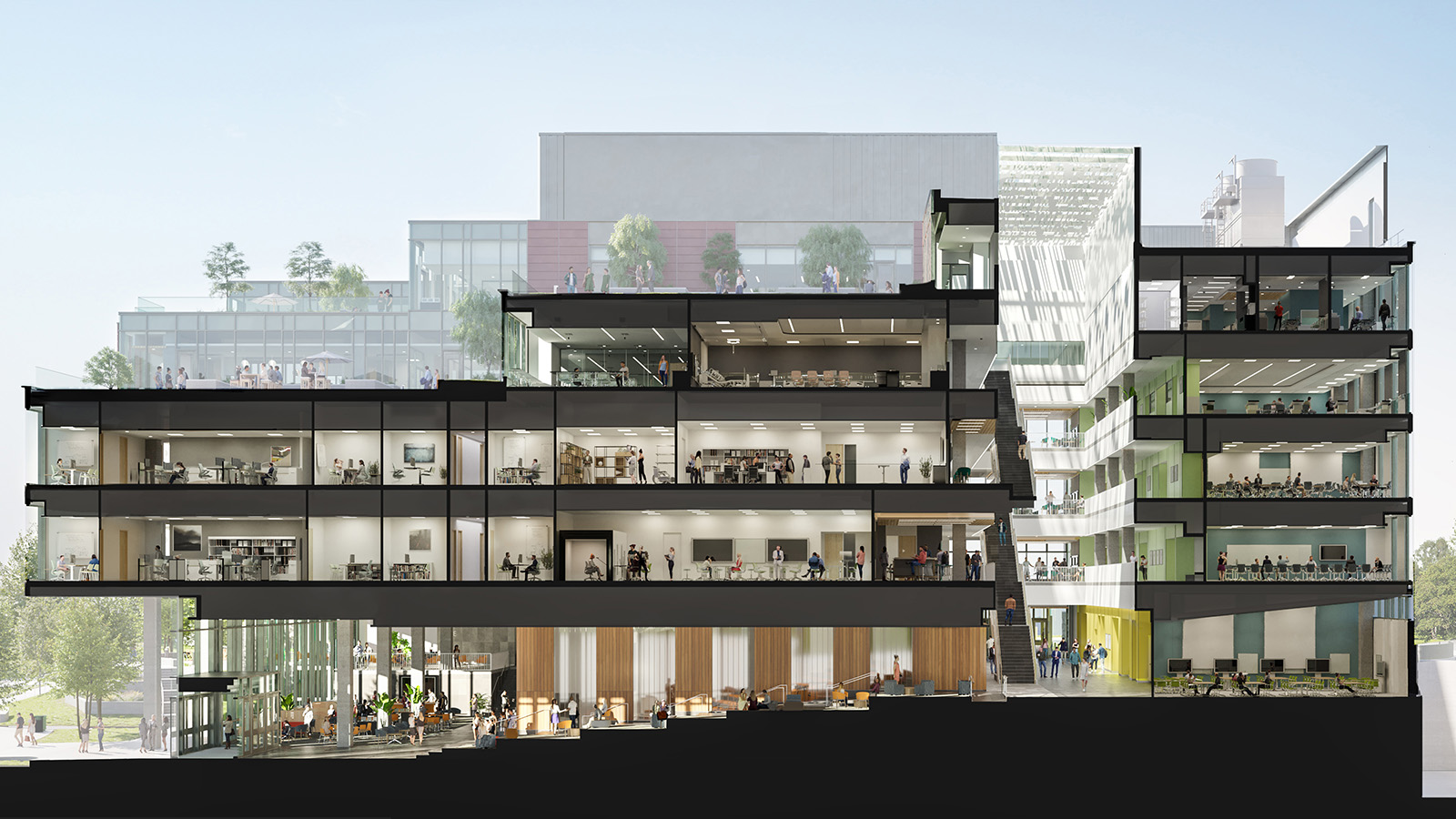
A rendering showing the state-of-the-art building’s multi-floor layout.
TU’s Director of Design and Construction David Mayhew shares what went on behind the scenes before the Health Professions Building officially opened.
When members of the TU community see the cranes, giant piles of dirt and corresponding holes in the ground that signal construction on campus has begun, they may not realize exactly how much planning goes on before the workers break ground on a new building.
No construction on campus happens without first making an appearance in the university’s master plan.
“A master plan identifies all our proposed capital improvement projects,” David Mayhew, director of design and construction, says. “It’s forward looking and sets a vision for the campus.”
The University System of Maryland requires member institutions to complete and submit a master plan (or updated one) every five years. In 1999, TU began planning for the last 25 years’ growth by looking at the university’s goals and reimagining the physical campus to figure out how to meet those goals. The Health Professions Building has been on each TU master plan since then.
“It got bigger each time,” says Mayhew. “It generally was always in the same location, which is unusual. So much of our physical campus is fixed. Every master plan starts with our existing conditions. There’s only so much room to propose where new buildings will go.”
With the location more or less decided, planning then turned to the building’s contents.
“We worked with the [College of Health Professions] for two years before we even started designing the building,” Mayhew says. “It starts with the master plan; then part one of planning will quantify: How much is it going to cost? How many square feet do we need? Part two gets into much more detail. It identifies every room in the building: How many faculty offices? How many laboratories and what types? What kinds of academic spaces?”
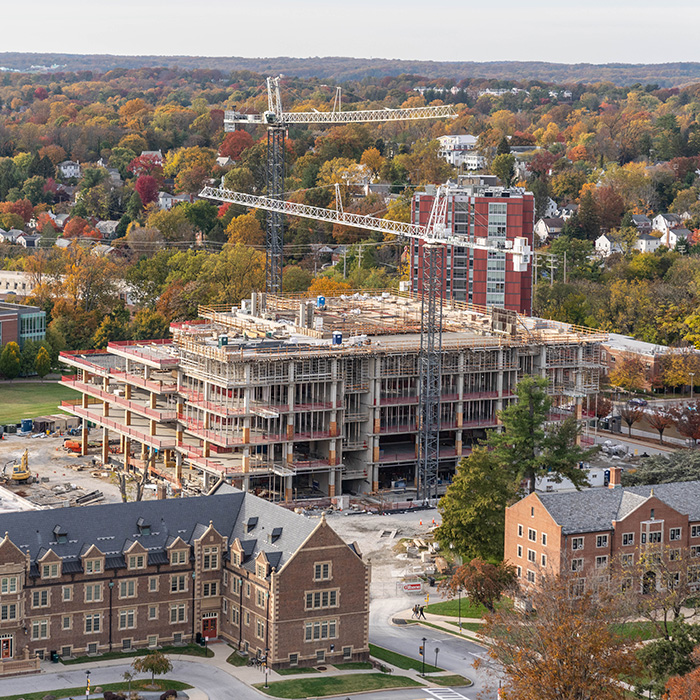
CHP Dean Lisa Plowfield had a specific vision for the new building and worked closely with Mayhew and his team to execute that plan. The goal for the building design was to replicate the settings the students would work in after graduation, providing high-quality education in a safe environment and promoting student success and well-being.
Classrooms designed to foster collaboration and interdisciplinary education are on the lower floors, while the top sections of the building include more complex spaces, such as the health assessment lab, the virtual body lab and the simulation center.
“With the college’s encouragement, we took the design process to another level,” he says. “The simulation center is a high-tech environment where students can practice their skills in what is almost a real-life environment. They have very sophisticated mannequins that can replicate many types of human functions and are controlled by an instructor. They simulate different scenarios the students will encounter in a work environment.”
An area the design team literally took to a new level were the terraced roof gardens.
“The site never changed, but the building got twice as big,” Mayhew says. “Originally it was around 125,000 square feet, then it became 175,000 and the result is a 240,000-square-foot building in the original location. When the building design evolved to match the scale of the other structures on campus, the resulting step downs with the roofs (from the sixth floor to the fifth to the fourth) were originally designed to be green spaces.”
Plowfield and her staff were instrumental in making programmatic connections to what became three terraced gardens. One is aligned with occupational therapy and offers a place for students to practice mobility exercises on different ramps, stairs and ground materials. The second is a respite garden adjacent to the simulation center. It’s meditative and quiet and intended for visitors to attend to their well-being. The third garden is called the Outreach Garden and is next to the building’s executive education center, which was designed to be a space to host all types of university events.
The goal for the building design was to replicate the settings the students would work in after graduation.
These gardens plus the abundant natural lighting through large windows and atria are several reasons the new building is on track for LEED Gold certification. Leadership in Energy and Environmental Design (LEED) is the world’s most widely used green building rating system. It provides a framework for identifying and implementing measurable green building design, construction, operations and maintenance solutions.
There are many unseen features throughout the building that also contribute to energy efficiency.
“The mechanical systems in the building use what’s known as underfloor displacement air, where the air conditioning comes out of vents in the floor underneath the seating,” Mayhew says. “Typically, it would be blown out of the ceiling and mix with other vents to create the right temperature. But this can recycle germs. Our method supplies air at a lower level and moves it through the room in one direction—up to the return grills in the ceiling—making it a healthier option.”
He also cites temperature controls, occupancy sensors that control lighting in rooms and daylight sensors that monitor available natural light to determine when to turn on artificial light. The building’s outside received as much care as the inside.
We wanted the outside to reflect what’s going on inside. We were not afraid of having a forward-looking building.
David Mayhew
“We want to reach the building’s full potential,” Mayhew says. “We want each building to represent the future. So while we try to match each new exterior to the style already present on campus, we were all on board with a more modern-looking building here. Hospitals use state-of-the-art technology. We wanted the outside to reflect what’s going on inside. We were not afraid of having a forward-looking building.”
The university’s mission is centered around serving the public good, now and in the future. The new Health Professions Building—inside and out—has been designed to help do just that.
More on the New Health Professions Building
Learn about the ins and outs of Towson University’s new Health Professions Building, from the ground-floor classrooms to the terraced roof gardens and all the state-of-the-art experiential learning areas in between.

An Evolution of Excellence
Karen Keady ’87 reflects on her nursing career and shares her thoughts on some of the Health Professions Building’s cutting-edge technologies.
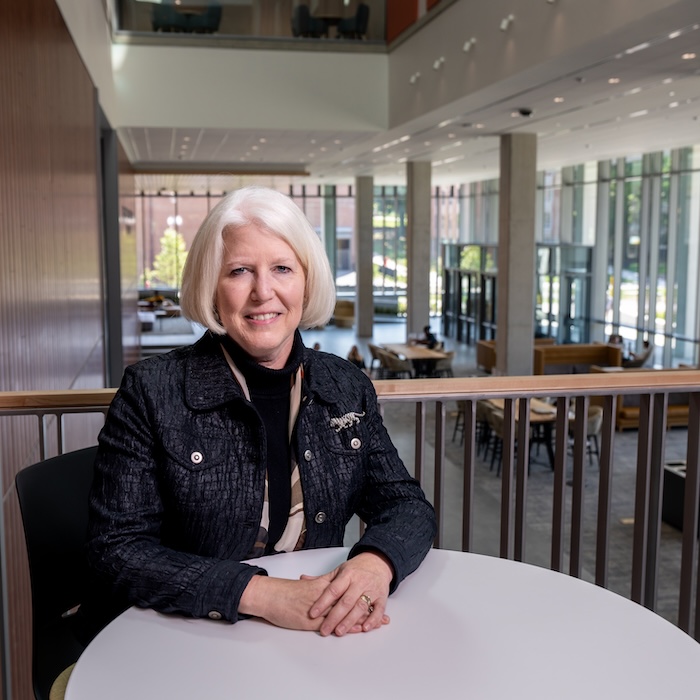
A Conversation with Dean Lisa Plowfield, Ph.D., RN
The dean of the College of Health Professions talks about the new building, its design and what effects it will have on the students, faculty and staff who spend their days there.
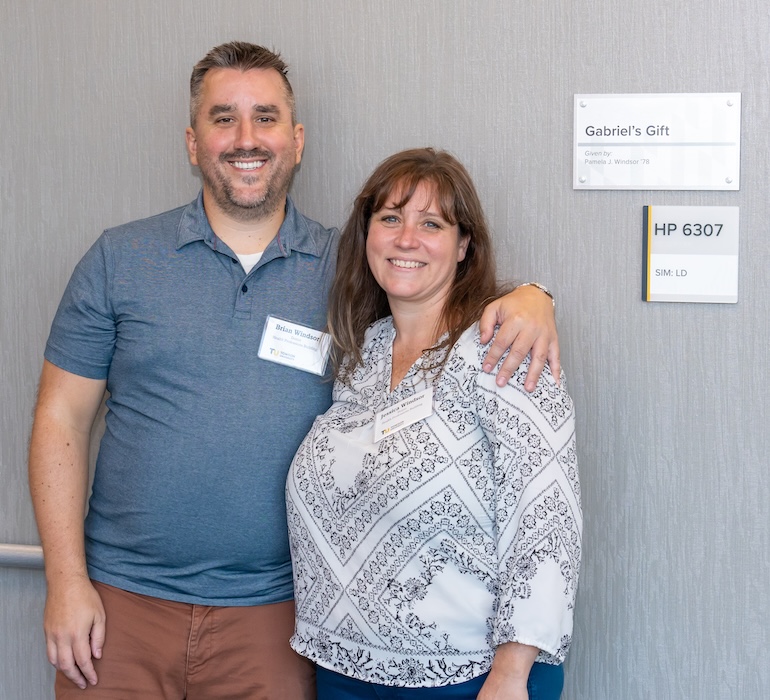
On Angel's Wings
Pam Windsor ’78 shares the story behind the Health Professions Building’s Gabriel’s Gift Labor and Delivery Suite
